Blog Archive: July 2014
African Union GDP Per Capita 2013
| Macroeconomics | 53 seen

The African Union (AU) is a continental union consisting of 55 member states located on the continent of Africa. The AU's future goals include a customs union, a single market, a central bank, and a common currency, thereby establishing an economic and monetary union.
The African Union has been created a while ago actually in 2001. The African Union consists of 54 countries (52 states and 2 Kingdoms).
Update: African Union GDP Per Capita 2022
Although African Union is not so integrated so closely as European Union, with common parliament, money e.t.c. - I do believe that there might be some future prospects by doing it so.
Anyway - I decided to measure GDP per capita in African Union this time.
GDP per Capita in African Union 2012/2013 2012 ($ thousands) 2013 ($ thousands) Growth ($) Percentage % Equatorial Guinea 22391 20572 -1819 -8.12 Seychelles 11689 14220 2531 21.65 Libya 13303 12167 -1136 -8.53 Gabon 10930 11571 641 5.86 Mauritius 8862…BRICS: An Overview of the Five Developing Economies (2013)
| Emerging Markets | 28 seen
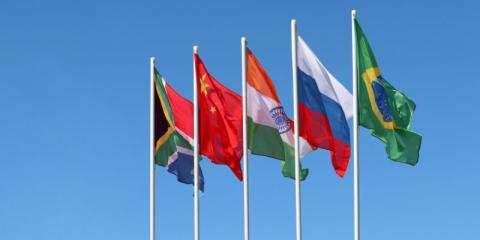
The BRICS countries, which include Brazil, Russia, India, China, and South Africa, are a group of developing economies that are expected to have a significant impact on the world economy in the coming years. This acronym was created in 2010 to represent the economies of these five countries, which have a combined population of over three trillion and represent about 40% of the world's population. The BRICS countries are also all G20 countries, making them a significant economic force in the world.
The Gross Domestic Product (GDP) of BRICS countries in 2013 was $15.8 trillion, making it the third largest economy in the world after the European Union and the United States. This is despite the fact that Brazil was in recession in 2013 with a GDP growth of -0.13%, and South Africa was experiencing greater economic troubles with a decrease of 8.9% in its economy.
China is the largest economy in the BRICS group, making up 58% of the total GDP. There have been predictions that China will soon become the largest economy in the world, with some predicting that this could happen in the current decade. On the other hand, Russia was slightly behind Brazil in the GDP…
Opening a Bank Account in Republic of Georgia
| Living in Georgia | 79 seen

In this article, I'm sharing notes on how I opened a bank account at ProCredit Georgia Bank back in 2014.
Since I originally wrote this article, I have opened several additional bank accounts in Georgia - at Bank Republic for check redemptions (Sold to TBC bank) and Bank of Georgia.
If you need consultancy or help with opening a bank account in Georgia, visit the Terramatris website: Opening Bank Account in Georgia
There was a law- asking foreigners to register for temporary residence in Georgia, and there was a requirement from the Georgian government when submitting documents for temporary residence in Public Service Hall to show a bank statement that you have about 3000 GEL on it -
Here in Georgia are many banks to choose from - like Bank of Georgia, TBC Bank, Liberty Bank, ProCredit bank, and many others. Bank of Georgia (Sakartvelos banki) probably is the most popular here in Georgia and the next popular choice might be TBC Bank.
Both Bank of Georgia and TBC bank. are proud of being listed on London Stock Exchange.
In 2014, for opening my personal bank account in the Republic of Georgia - I…
Electric power consumption (kWh per capita) in Former Soviet Union 2011
| Macroeconomics | 6 seen

In the wake of the recent power outage in Tbilisi, I decided to delve into electric power consumption in the Former Soviet Union (FSU) space. In this article, I explore the kWh per capita consumption in various FSU countries, based on data from the World Bank. Surprisingly, Russia, with a minimum wage of $160 per month, has the highest kWh per capita consumption, followed by Estonia, which has a higher standard of living.
This article serves as a starting point to better understand the economy of a country by studying its electric power consumption.
Electric power consumption (kWh per capita) in Former Soviet Union 2011 2011 kWh Monthly Daily Russia 6,486 540.5 17.76 Estonia 6,314 526.16 17.29 Kazakhstan 4,893 407.75 13.40 Ukraine 3,662 305.16 10.03 Belarus 3,628 302.33 9.93 Lithuania 3,530 294.16 9.67 Latvia 3,264 272 8.94 Turkmenistan 2,440 203.33 6.68 Georgia 1,918 159.83 5.25 Armenia 1,755 146.25…EU Member States' GDP: A Closer Look at Europe's Economic Strength and Diversity (2014)
| Macroeconomics | 14 seen
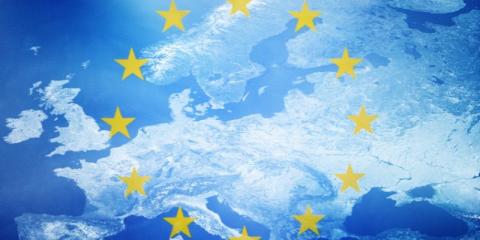
The European Union (EU) is a massive economic force, with a combined GDP that would make it the world's largest economy if it were viewed as a single entity.
However, it is important to remember that the EU is made up of 27 independent member states (as of 20213) each have its own unique economic challenges and strengths.
In this article, we will examine the individual GDPs of each member state in the EU. The GDP of a country is a measure of its economic output and is calculated by adding up the value of all goods and services produced in that country over a specific period of time, usually a year.
It is important to note that the GDP of each EU member state is not necessarily a measure of its overall economic well-being or standard of living. There are other factors to consider, such as income inequality, poverty rates, and access to healthcare and education. However, GDP is still an important metric for assessing the overall economic strength of a country and its role in the global economy.
GDP in European Union 2013 2012 $ (bln) 2013 $ (bln) Growth $ (mln) …Top 5 Hotels in Trabzon for a Luxurious Stay
| Hotel reviews | 19 seen
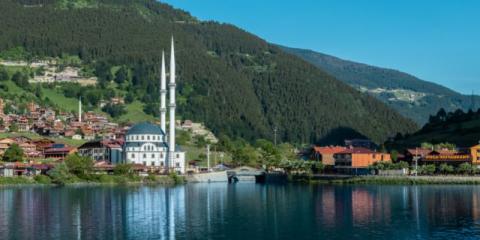
Trabzon, located in the Black Sea region of Turkey, is a popular tourist destination known for its rich history, stunning landscapes, and diverse culture. Whether you're visiting for business or pleasure, Trabzon has a variety of hotels to suit your needs.
In this article, we will take a closer look at some of the top hotels in Trabzon.
Please note that some of the links in this article may be affiliate links to Booking.com. This means that we may earn a commission if you decide to make a booking or purchase through our links, at no additional cost to you.
The Zorlu Grand Hotel is a luxury hotel located in the city center of Trabzon. It offers stunning views of the Black Sea and is within walking distance of many local attractions. The hotel features spacious rooms, a fitness center, a spa, and a rooftop restaurant serving delicious Turkish cuisine.
The Novotel Trabzon is a modern and stylish hotel located on the seafront of Trabzon. It features spacious and comfortable rooms with stunning sea views, a fitness center, an indoor pool, and…
Top Luxury Hotels in Yerevan: A Guide to the Best Accommodations in the Armenian Capital
| Travel guides | 19 seen
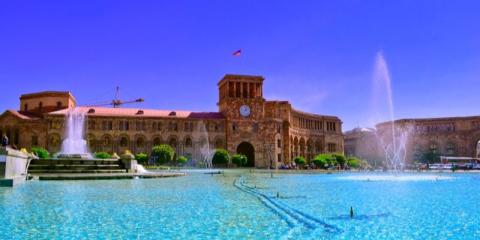
Yerevan, the capital of Armenia, is a city with a rich history, vibrant culture, and stunning architecture. It's also home to some of the best luxury hotels in the region, each offering its own unique blend of comfort, sophistication, and style. Whether you're visiting Yerevan for business or pleasure, there's no shortage of high-end accommodations to choose from.
In this guide, we'll take a closer look at some of the top luxury hotels in Yerevan and what makes them stand out.
Please note: Hotels listed in this article contains affiliate links to Booking.com, and if you will click on them and make an actual booking I will earn an affiliate income from that
The Alexander, a Luxury Collection HotelThe Alexander is a Luxury Collection Hotel located in the heart of Yerevan. The hotel features a mix of modern and traditional Armenian design and offers a wide range of amenities, including a full-service spa, fitness center, and multiple dining options. Each of the 114 rooms and suites is elegantly decorated with plush furnishings and high-end amenities. The hotel's central location puts guests within easy walking distance of some of Yerevan's…
GDP In Former Soviet Union 2013
| Macroeconomics | 12 seen

The GDP of the former Soviet Union countries has been a topic of interest for many economists, politicians, and individuals alike. The economic performance of these countries is seen as an indicator of their growth and development.
In 2013, the GDP of the former Soviet Union countries was a mixed bag of growth and decline. This article will take a look at the GDP performance of these countries in 2013.
Russia, the largest country in the former Soviet Union, had a GDP of $2.1 trillion in 2013. This was a slight increase from the previous year, with the country's economy growing at a rate of 1.3%. Despite the economic sanctions imposed on Russia by western countries due to its annexation of Crimea, the country's economy managed to grow, albeit at a slower rate.
Kazakhstan, the second-largest economy in the former Soviet Union, had a GDP of $221.8 billion in 2013. The country's economy grew by 6% in the same year, primarily due to its natural resources such as oil and gas. The government of Kazakhstan had also implemented several measures to promote economic growth and development.
Ukraine, the…
GDP Per Capita in European Union 2013
| Macroeconomics | 52 seen
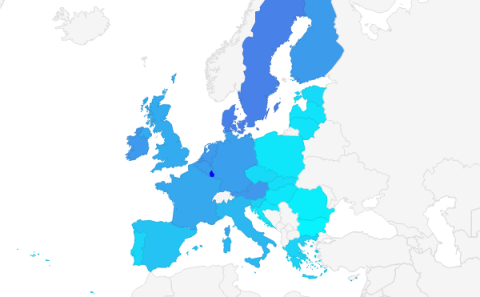
Back in 2013, the European Union (EU) was a political and economic union of 28 member states that were located primarily in Europe.
While the European Union consists of 28 member states. Some would say - Europe is United. Is it so? Let's figure out, who lives better and who does not.
Update: GDP Per Capita in European Union 2022
GDP per Capita in European Union 2013 2012 2013 Change $ Growth % Luxembourg 103859 111162 7303 6.56 Denmark 56364 58930 2566 4.35 Sweden 55039 58164 3125 5.31 Austria 46792 49074 2282 4.65 Netherlands 45961 47617 1656 3.47 Ireland 45922 47400 1478 3.11 Finland 45649 47219 1570 3.32 Belgium 43396 45387 1991 4.38 Germany 42598 45085 2487 5.51 France 39759 41421 1662 4.01 United Kingdom 38649 39351 702 1.78 Italy 33814 34619 805 2.3 Spain 28282…GDP Per Capita In Former Soviet Union Countries 2013
| Macroeconomics | 61 seen

The collapse of the Soviet Union in 1991 marked the beginning of a new era for the countries of the former Soviet Union. With the fall of the Soviet regime, many of these countries were left to fend for themselves, struggling to build new economies and establish new political systems.
Today, the former Soviet Union countries are still grappling with the legacy of the Soviet era, and economic development remains a major challenge.
In this article, we will take a look at the GDP per capita of the former Soviet Union countries in 2013 and analyze the factors that have contributed to their economic development.
Disclaimer: The Baltic States (Estonia, Latvia, and Lithuania) have been excluded from this list due to their historical and political circumstances. While these countries were part of the Soviet Union, they do not consider themselves as part of the "former Soviet Union countries" and have since made significant progress in developing their own unique identities and economies.
GDP per capita is a measure of the economic output of a country divided by the number of people living in that country. It is a commonly used…
Minimum Wages in European Union 2014
| Macroeconomics | 83 seen

The minimum wage is set by the government as the minimum standard of guaranteed income (hourly/monthly) that a worker should receive for the work he/she performs. In 2014, there were 22 countries out of 28 in European Union, which had their national minimum wages set.
6 countries out of 28 have no minimum wage set by the government at all, but they have some collective bargaining agreements. Countries that don't have a minimum wage set by the government in European Union - Austria, Denmark, Finland, Germany, Italy, and Sweden.
EUR USD Luxembourg 1921 2593.35 Belgium 1501 2026.35 Netherlands 1485 2004.75 Ireland 1461 1972.35 France 1455 1964.25 United Kingdom 1226 1655.1 Cyprus 870 1174.5 Slovenia 789 1065.15 Spain 752 1015.2 Malta 702 947.7 Greece 683 922.05 Portugal 565 762.75 Poland 405 546.75 Croatia 396 534.6 Estonia 355 479.25 Slovakia 352 475.2 Hungary 327…Inequality of Minimum Wages in Former Soviet Union: An Updated Look in 2014
| Macroeconomics | 8 seen

It has been six months since I last analyzed the minimum wages in the former Soviet Union. Although it is not a major factor in economic growth, the minimum wage is still a relevant indicator in understanding a country's economic status.
In my previous research in 2013, I found that Estonia had the highest minimum wage of $427, while Kyrgyzstan had the lowest at just $17 per month. In this updated analysis for 2014, the highest minimum wage is still in Estonia, with an increase to $480, and the lowest is still in Kyrgyzstan, but with a slight decrease to $16 per month.
The Baltic States, specifically Estonia, Latvia, and Lithuania, remain at the forefront of the minimum wage table. The gap between Estonia and Lithuania is a substantial $89, indicating significant differences even among countries in the same region. It is noteworthy that minimum wages in some countries, such as Russia, Kazakhstan, Ukraine, Moldova, Georgia, Tajikistan, and Kyrgyzstan, have decreased instead of increased. However, it is not necessarily due to the government's decision to cut down the minimum wage, but rather the devaluation of their national currencies against the USD.
…
Georgia Plans To Have Full membership in EU in 5-10 Years (2014)
| Emerging Markets | 15 seen
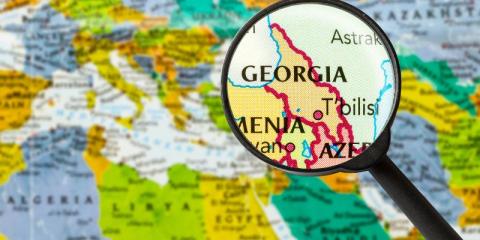
Recently Georgia signed Association Agreement with EU, which includes Free Trade Agreement with the EU as well. Georgian Politicians were so happy, that they rushed to announce some great plans - and so the MP of Georgia announced, that Georgia is eager to have full EU membership in the next 5-10 years.
So far so good.
On the other hand, the newly elected president of the European Commission Jean-Claude Juncker has already announced, that he is not willing to see any enlargement in European Union for the next 5 years, mainly because none of the existing candidate's countries could fulfill the requirements to join EU in next 5 years.
Since Georgia is not even a candidate country for full EU membership - it's hard to believe that Georgia could join in the next 5 years.
So it might be 10 years then? 10 years sounds more realistic, but again, I'm not so sure regarding this also.
My understanding is that Georgia one day might become a member of the EU is only after or together when Turkey will join the EU (if that gonna happen at all).
Now, since I'm a more practical guy, liking some…
Cycling Tbilisi - Night Ride - Tbilisi Old Town
| Outdoor Activities | 7 seen
This ride was an extended versions for ride I made a few days ago - Dinamo Arena - Dibude. And again - evening (night), with hopes there will be less people in the streets and less vehicles. Wrong, Wrong, Wrong.
Seems, Tbilisi never sleeps - and speaking of night cycling in this Caucasus city- it seems even more dangerous than cycling bt day - in day there are at least traffic jams, making overall vehicle movement slow - by night - there are less cars (of course), but they drive twice as crazy as they do in days.
Not to speak about pedestrians - they never watch where are they going, they don't care are they on the pathway or in the middle of street - anyway- traffic in Tbilisi sucks.
We started our rode at Marjanishvilli street, headed down to Rose Garden, to take a look at newly opened open air cinema. Turns out they show movies here in exchange of - you must spend 10 GEL for coffee - another neat Georgian marketing trick. After stop at Rose's Garden we continued our ride heading to Dry Bridge, before that we turned right and went straight…
16 Best Batumi Beach / Seaside Hotels
| Hotel reviews | 58 seen
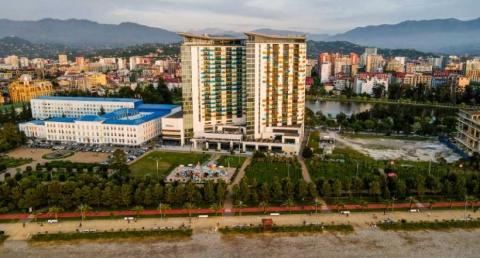
Batumi offers plenty of hotels over there. If you are into getting some tan at pebbled Black Sea coast beaches, you might like to have a comfortable rest after it.
Choose your hotel among the best available in Batumi. Prices among the best hotels in Batumi will vary starting from 100 GEL ($57/ EUR 42) and will go up to 360 GEL ($205 / EUR 150) or higher.
While you are in Batumi, consider Batumi Real Estate Crypto Investment
From my personal recommendations from Batumi hotels I have stayed so far, I should note Batumi Hilton and Batumi Radisson hotels. For a family friendly budget stay I can highly recommend Best Western Premier Hotel
Here is the list with some of the best beach/seaside hotels in Batumi
Sheraton Batumi HotelThis property is 3 minutes walk from the beach. This 5-star hotel is located in Batumi city centre, 200 m from the Black Sea Coast. The Sheraton Batumi offers a spa area with indoor and outdoor swimming pools.
Free Wi-Fi and a flat-screen TV are included in all rooms at the Sheraton Batumi Hotel. The spacious rooms also feature chic, modern design and a…